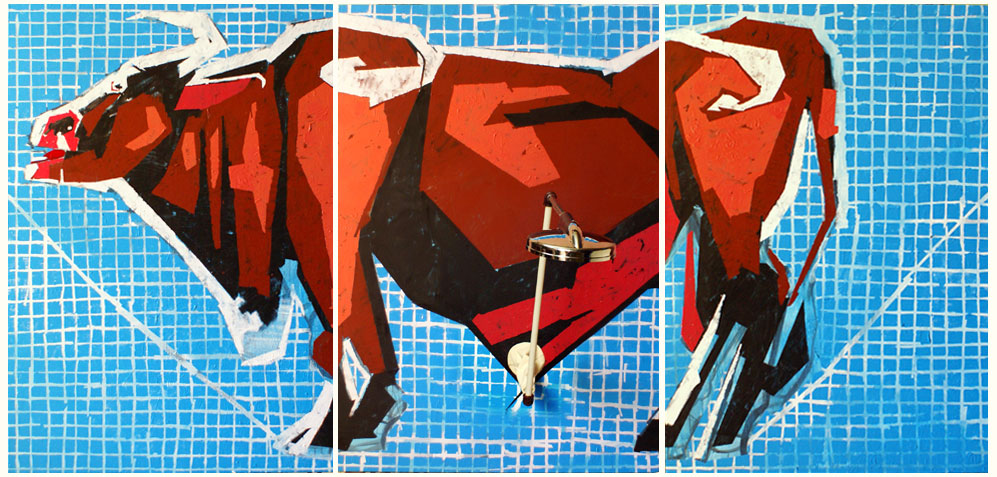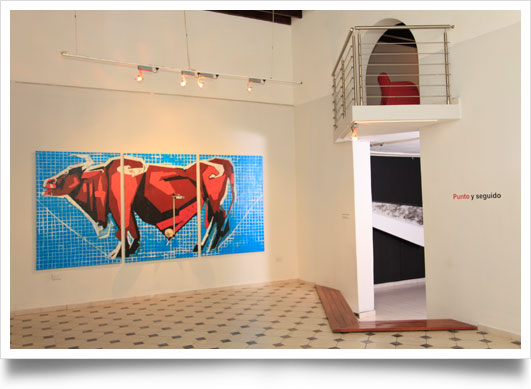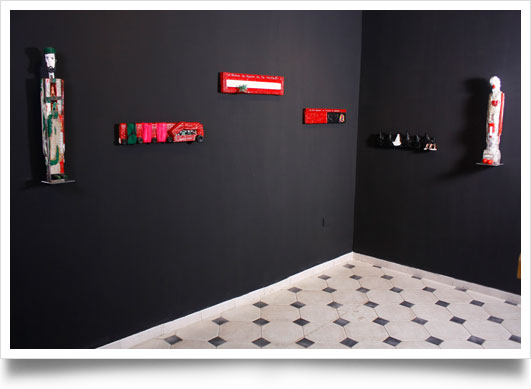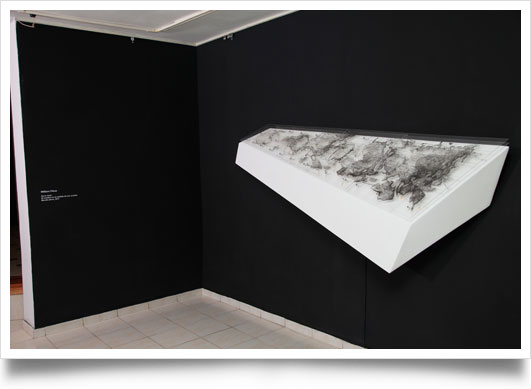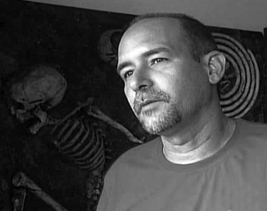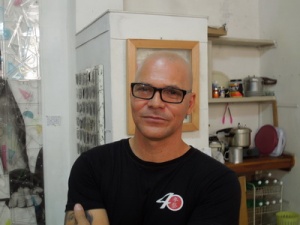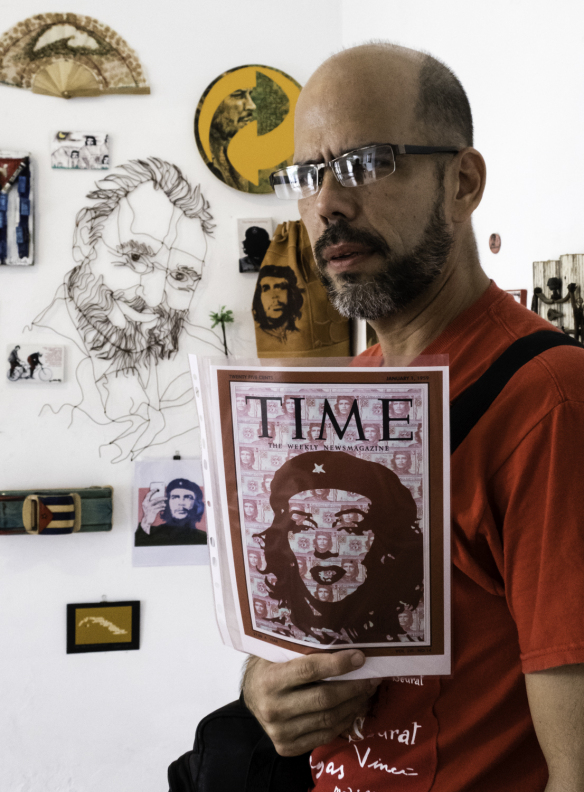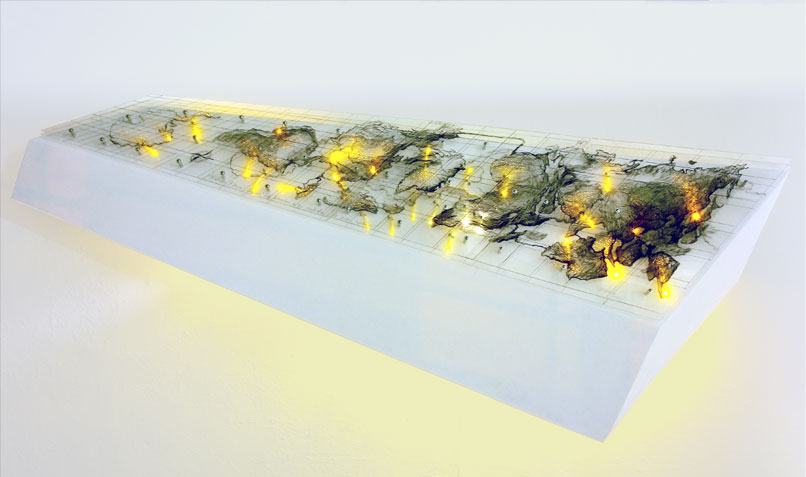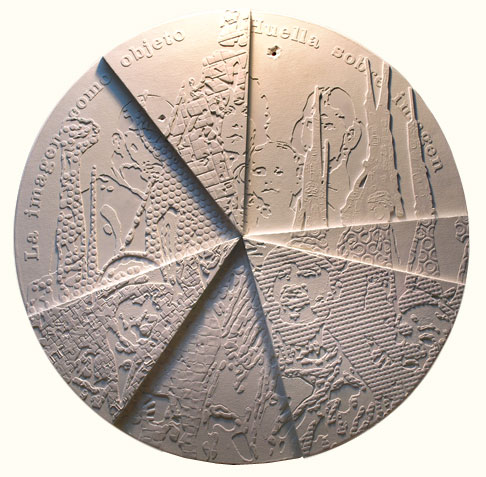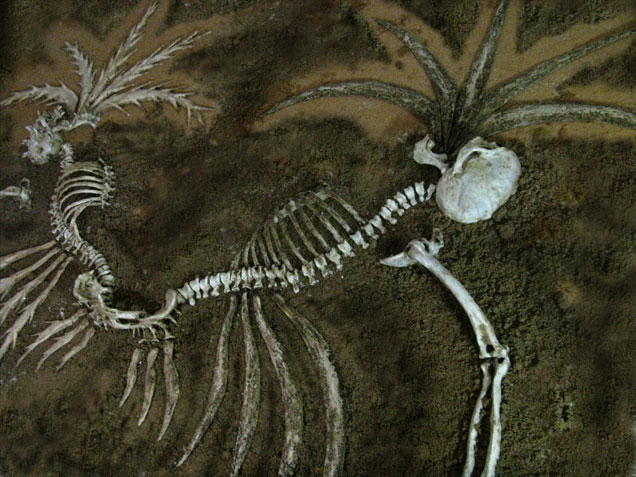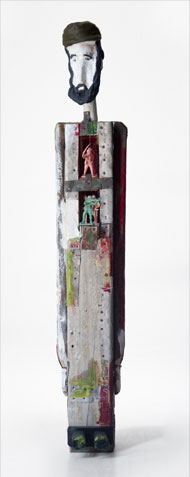New sentence
NEW SENTENCE: In Search of the Skein of Time
Diversity is the most invariable sign to define contemporary Cuban art. A statement that seems to underlie the current group exhibition New Sentence, where five artists come together to offer us another glance at the continuance of art events in Cienfuegos that it should be underlined emerge here due to very heterogeneous imaginaries.
We are dealing with an articulation of individual works whose sole immediate and more visible link is that of being fellow-countrymen a fact not in the least insignificant if we think of the background to be found in the art history of the beautiful Pearl of the South, from the valuable contributions in the works of sculptor Mateo Torriente, not to forget those by the naïf artists grouped around Samuel Feijóo among them Julián Espinosa, the dear and peculiar Wayacón as well as other naïf artists, or the renewing tasks intended by Grupo Punto, which at the end of the twentieth century displayed such intensity in Cienfuegos that it went well beyond every attempt to be circumscribed to a merely local spirit. The group was formed by artists that were young at the time, who disregarded acquiescent notions and chose to follow an art project of ideas while in the capital a whole sensual withdrawal was taking place toward the delight in the craft and the genres.
A whole decade has gone by since the collective activity of Grupo Punto ceased to exist. The artists that have come together here (three of them are former members of that group William, Juan Karlos and Adrián) have felt, not without a certain nostalgia, that already mentioned former communion, while at the same time they have recalled the experimental searches in those days of the common denominator in their creations the Cienfuegos landscape.
Theirs is now a generational tuning, of art context and concerns, although they are not forming a group as such. Thus, suddenly, this unsuspected quintet has joined with the purpose of exhibiting in our UNEAC gallery. And this refreshing new meeting has assaulted them in the midst of the organization of their exhibition like a déjà vu, similar to a paramnesia through which they unexpectedly remember what still has not taken place.
But I would say that in spite of their dissimilar creations there is, in addition to that art of the past or this context of the present, something more in the coupling of such different projects. One senses a vibrant concern for time, whether from the point of view of existence, history, philosophy or aesthetics. Let us see it in their works.
William Pérez works with optic fiber, acrylic, wood and drawings, in artifacts that favor an inclusive reading of objects and technologies; he alludes to diverse fragments, as if we intended to create traps and resources to retain our psychological memory.
Perhaps the viewer will consider Alexander Morales bull very distanced from these metaphors, particularly when he is inclined to a touch of humor that might spoil any far-reaching effect; an irony that Alexander, in a very Cuban fashion, reveals in the animal’s sexuality. But if we reflect on the icon we would see the image of the beast, which besides, has had such dense meaning throughout the history of art that it is, in itself, a paradigm on meaning. Thus, we can imagine the bull representing our inner power, i.e., the power of Taoist and Zen paintings; the very beautiful one of the bullfighting painted in murals in millennial Crete, not to forget the pictorial allegory perpetuated by Picasso with his Spanish strength or also the one that some will connect with our closest environment in this “Special Period”. Life and death condensed in one sole icon, what metaphor on the passing of time could be fuller?
In his antipode, Vladimir Rodríguez assumes a visual form that could astonish the twenty-first century spectator. His installations submerge us in a universe that is beyond time: it does not belong to the past because there are no comparative analogies, nor to the present because it is inexistent in the planet, but you could neither say that it is the unknown future. His excavations seem to wait for the viewer to become an amazed archaeologist or that we clarify a philosophy of the world, of the species or of evolution that he connects from his subjectivity with other concepts such as multiple cosmogonies, manipulation and a poetic-literary bestiary. With this piece based on numerological concepts he presents the myth of the Ibevis, reflecting the notion that the opposites complement in nature itself a criterion which I find similar to the Ying and Yang of Oriental philosophy.
Very far from this amazing archaeology, Adrián Rumbaut exalts painting from an abstract point of view. Spectrums (his pictorial diagrams) purify maps from color. It should be recalled how the artist, in previous periods, made paintings locked in illusionist prisons. At present he has been increasingly focusing on the purest painting experience, not in terms of style or morphology, but as to the relief created by the pigment. But he has not ceased to be implacable in confining the framed painting within a metal band. I question rules of the pictorial tradition, he tells us. Adrián starts from a couple of photos, one of the rebels in the Sierra and another one of his family; he works again on them as if they were planes for the analytical perception. His is an art of folding on one side there reigns the pictorial image, on the other it is intellectual.
Juan Karlos Echeverría emphasizes, from the historical-artistic angle on which Adrián finds his support, that notion of time when presenting his work on themes that broach the past of socialism in Eastern Europe and their relation to Cuba. He takes from the iconography of our historical identity and remits us to the art of the nineties, when the images of Cuban art were permeated by an obsession for identity and insularity. His installations are fresh in spite of the decade gone by since that recycling, although I think they require more complex elaborations.
I have come to the last one of the artists and once more it clearly appears how, without consciously intending to, these five artists turn their glance to that inextinguishable cycle which is time.
If Grupo Punto (1995-2000) was an oxygenating group experience in Cuban art, now, in this promissory summer of 2011, we notice a continuance. A New Sentence through such different imageries of those who, without coming together in any kind of group, seem to leave us the whole time to reveal the art contained in their creations.
Carina Pino Santos
Artworks
